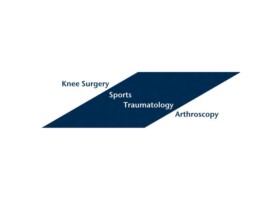
Authors:
Abstract:
Purpose:
The purpose of this study was to quantitatively measure the morphology of the glenoid and to assess feasibility of using the medial tibial plateau surface as a donor for osteoarticular allograft reconstruction of the glenoid.
Methods:
Using computed tomography (CT), 10 tibias and 10 scapular models from our database (5 males and 5 females in each group) were randomly selected. Commercial software (Mimics, Materialize, Inc., Plymouth, MI) was used to extract the bone contours from the CT images and to reconstruct the 3-dimensional (3D) geometry of the scapula and tibia. By utilizing the software Creo Elements/Pro 5.0 (Parametric Technology Corp., Needham, MA), mean length and width of both the glenoid and medial tibial plateau were calculated. Radius of curvature was then measured in each 3D CT model at three intermediate segment points that were established within the length line at 25, 50, and 75 percent from superior to inferior in the glenoid and from posterior to anterior in the medial tibial plateau. Statistical analysis was performed and determined to be significant for P < 0.05.
Results:
The mean (± SD) radius of curvature values at the established 25, 50, and 75 percent segments of the glenoid were 47.4 ± 17.5 mm, 51.2 ± 12.4 mm, and 45.9 ± 17.0 mm, respectively. For the medial tibial plateau, the radius of curvature at 25, 50, and 75 percent were 43.5 ± 9.7 mm, 37.4 ± 14.3 mm and 52.3 ± 21.5 mm, respectively. Values of the glenoid length were 34.0 ± 2.9 mm, and width values were 24.4 ± 2.3 mm. For the medial tibial plateau, the length was 42.6 ± 2.7 mm, and the width was 23.3 ± 4.3 mm. There was no statistical difference in the radius of curvature and dimensional surface area between the glenoid and medial tibial plateau surfaces.
Conclusion:
The 3D CT-based anatomic study found that there is a statistically similar relationship in the radius of curvature of the glenoid and the medial tibial plateau surface. This concept may allow the medial tibial plateau to be used as a donor for osteoarticular allograft reconstruction of the glenoid, especially in young patients where previous studies have demonstrated that the success rate in shoulder replacements is not as good as in older patients.
For the complete study: Normal curvature of glenoid surface can be restored when performing an inlay osteochondral allograft: an anatomic computed tomographic comparison
